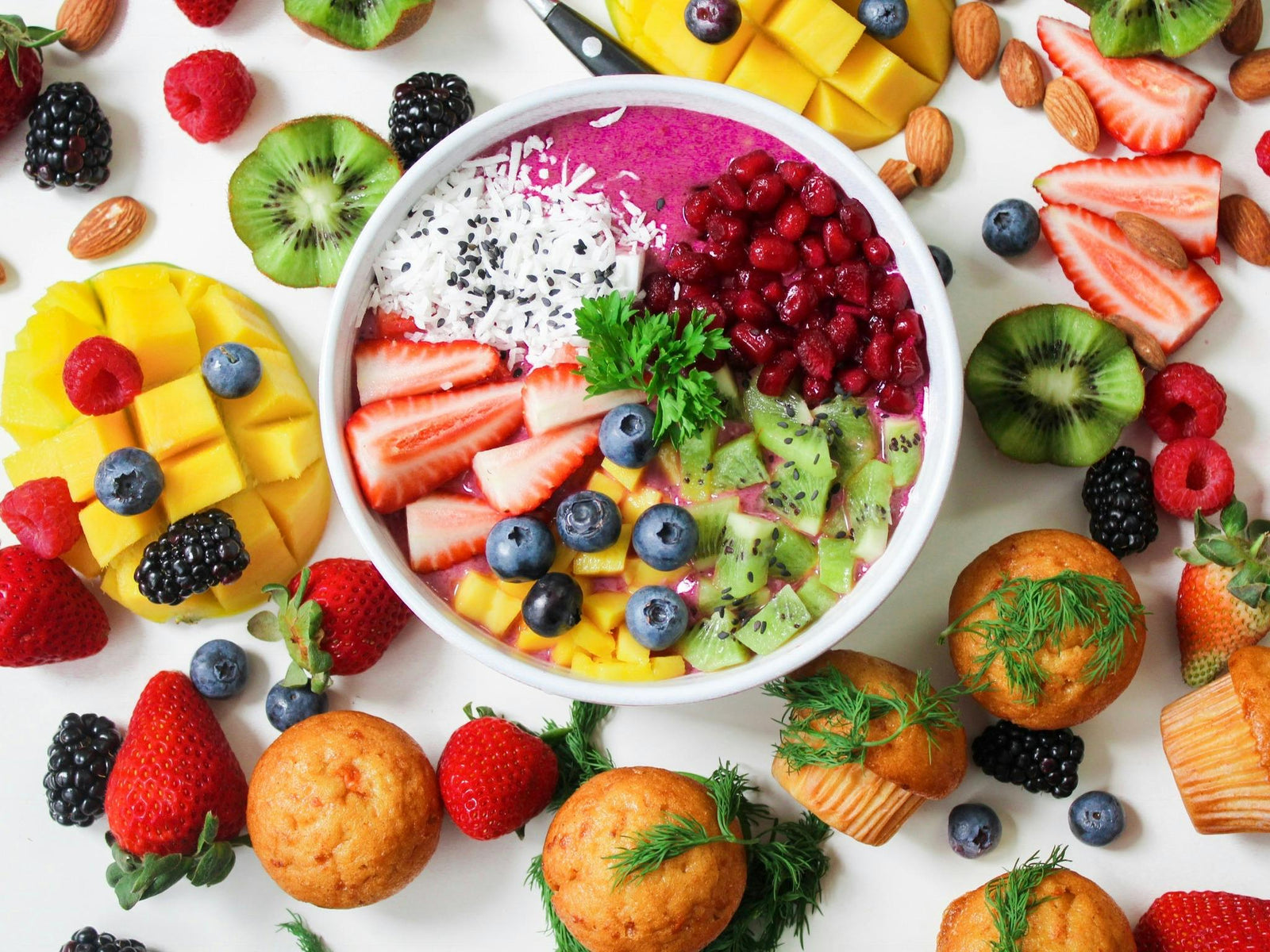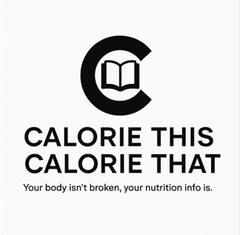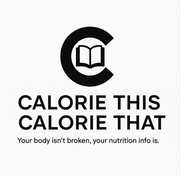Understanding Calorie Density (And Why It’s Keeping You Stuck)

You swear you’re doing everything right. You eat your veggies, choose "healthy" foods, maybe you even cut out sugar. But the scale? Stubborn as ever. Sound familiar? If you’re frustrated and wondering what gives, let me introduce the concept that might change everything: calorie density.
Most people never learn about calorie density — and it’s a big reason they stay stuck. This isn’t about some fad or magic pill. It’s basic nutrition science that got lost amid all the diet BS out there. Once you get it, you’ll see why you can be eating “clean” and still not lose fat. And more importantly, you’ll know how to finally fix it.
What Is Calorie Density (and Why You Should Care)
Calorie density is simply the number of calories in a given weight or volume of food. Think of it this way: some foods pack a ton of calories into a tiny package, while others give you lots of food for very few calories. Understanding this is game-changing for fat loss.
To visualize it, here’s an example of roughly 200-calorie portions of different foods:
-
1.5 tablespoons of peanut butter: Tiny serving, barely takes the edge off your hunger.
-
One large apple + a handful of berries: Lots of volume and fiber – a satisfying snack.
-
A massive bowl of steamed veggies: Enormous portion that fills your stomach for very few calories.
Same calories, radically different fullness — that’s the power of calorie densityfile-ppi6owsxrcnyaz4yg1azvs.
Meanwhile, that fast-food burger you skipped might’ve been around 500-600 calories. See the issue? "Salad" doesn’t automatically mean "low-calorie." It all comes down to what’s in it. Lettuce and cucumbers are light, but add a bunch of calorie-dense ingredients and the scales tip quickly.
For example, compare a grilled chicken salad loaded with avocado, cheese, and ranch dressing to a plain single-patty burger with ketchup. The salad could easily wipe out more of your calorie budget than the burger. Crazy, right? A burger isn’t automatically "healthier" than a salad, but for fat loss even a virtuous salad can backfire if it’s loaded with high-cal extras.
A healthy label means nothing if the calories are sky-high. Don’t be fooled by the name of the dish – look at what’s in the dish.
Why "Eating Clean" Doesn’t Guarantee Fat Loss
Eating whole, unprocessed foods is great for your health, no doubt. But let’s get real: you could eat only organic, gluten-free, non-GMO everything and still gain fat if you’re eating too many calories. Clean eating isn’t a free pass to eat unlimited amounts.
Here’s a common scenario: You swap chips for a handful of almonds (~170 calories) and cook your veggies in a few tablespoons of olive oil (~120 calories each) because it's "healthy." Before you know it, you’ve added hundreds of calories even though every ingredient was "clean."
For example, a "healthy" smoothie with banana, almond milk, and peanut butter might pack around 600 calories and leave you hungry soon after, whereas a veggie omelet with a slice of toast plus Greek yogurt and berries (about the same ~600 calories) will keep you full for hoursfile-ppi6owsxrcnyaz4yg1azvsfile-ppi6owsxrcnyaz4yg1azvs. Both choices are wholesome, but the second is far lower in calorie density.
"Clean" eating alone doesn’t guarantee a calorie deficit. You still have to pay attention to how much energy is hitting your system. Many people fall into the trap of thinking healthy equals low-calorie and end up frustrated when the scale doesn’t budge. The truth is, you can gain weight eating "healthy" foods if you’re not aware of portions and calorie density.
How Calorie Density Keeps You Stuck
So why is calorie density the silent saboteur of so many diets? Because it flies under the radar. If you’re not mindful of it, you can feel like you’re doing everything right and wonder why you’re always hungry or not losing weight.
Here’s the brutal truth: Hunger will always defeat willpower. If your meals don’t fill you up, you will eventually graze, snack, or outright binge – it’s human nature. Most diet "failures" happen not because you lack effort or the nutrition science was wrong, but because the plan wasn’t satisfying enoughfile-ppi6owsxrcnyaz4yg1azvsfile-ppi6owsxrcnyaz4yg1azvs. You can only push through stomach growls for so long before you cavefile-ppi6owsxrcnyaz4yg1azvs.
Calorie-dense foods are sneaky because they don’t take up much room in your stomach, so you can easily down a lot of calories and still not feel full. When you consistently choose low-volume, high-calorie items, you’re constantly white-knuckling your diet, wondering why it’s so damn hard.
A diet that ignores calorie density is a diet destined to leave you frustrated.
You Were Never Taught This (It’s Not Your Fault)
If all of this is news to you, you’re not alone. Most of us were never taught about calorie density in school or by typical diet advice. We heard things like "cut carbs," "eat clean," "avoid junk food" – which can be decent advice but don’t paint the full picture. No one explained that it’s not just what you eat, but how many calories are packed into it that matters.
So if you’ve been struggling, it’s not because you’re lazy or "broken." It’s because this weight-loss lesson was left out of the conversation. Your body isn’t broken – the information you were given was. Once this clicks, it changes how you see every meal.
The book Calorie This, Calorie That by Aba Solomon calls calorie density "the fullness hack most diets miss" for a reasonfile-ppi6owsxrcnyaz4yg1azvs. It’s a concept that has been quietly helping people eat more and lose weight – once they know how to use it.
Making Calorie Density Work For You
Time for some good news: calorie density isn’t just a term to know, it’s a tool you can use starting now. The goal is simple: eat more foods that fill you up for fewer calories. When you do that, fat loss gets a whole lot easier because you’re not starving all the time.
This approach is sometimes called "volume eating," and it’s basically the opposite of those tiny-portion starvation diets. Instead of three bites of food that leave you sad and hungry, you get big portions of lower-calorie foods that actually satisfy you.
Here are some ways to put calorie density into practice:
-
Fill up on veggies (and soup) first: Start your meal with a broth-based soup or a salad (easy on the dressing), and pile lots of vegetables on your plate. These add lots of volume for minimal calories, taking the edge off your hunger.
-
Choose lean protein and high-fiber carbs: Protein and fiber keep you full, so build meals around lean protein (chicken, fish, tofu) and fiber-rich carbs (veggies, fruits, whole grains) instead of heavy, oily dishes.
-
Swap calorie-dense ingredients for lighter ones: Use lighter alternatives: salsa or herbs instead of creamy sauce, cooking spray instead of lots of oil, and Greek yogurt or mustard in place of mayo.
Notice none of this is about eating only lettuce or going to bed hungry. It’s about making your meals work harder for you. When you eat this way, you’ll often find you can eat more food than before and still lose weight, because you’ve lowered the overall calorie density of your diet. You’re essentially fooling your stomach (in a good way) by giving it bulk and nutrition without excess calories.
And here’s the kicker – you won’t feel like you’re dieting. You’ll feel like you’re just eating normal meals (because you are!), just structured a bit smarter. Instead of a plate that’s half creamy pasta and a tiny side salad, you flip it: a giant salad or heap of veggies, a moderate portion of pasta with lean protein and tomato-based sauce. You still get to enjoy your food, but you’ve strategically lowered the calories.
Remember, it’s not about deprivation; it’s about smart substitutions and portions. Once you get the hang of it, it’s incredibly empowering. You realize you can control your hunger and your progress without suffering.
Final Thoughts
Calorie density is the truth about food that I wish someone had handed me on day one of my fitness journey. It would have saved me years of frustration. If you’ve been stuck, constantly feeling like you’re fighting yourself, now you know why. It wasn’t that you were weak or that your metabolism had some vendetta against you. You were just unknowingly eating in a way that kept you stuck.
The beautiful thing is that you can start changing that today.
No more being fooled by the "healthy" halo or portion sizes that leave you empty. You’ve got the knowledge now. Use it.
If this helped you rethink food, the full book breaks it down even deeper — no fluff, just clarity. Get it now: Calorie This Calorie That E-Book.

